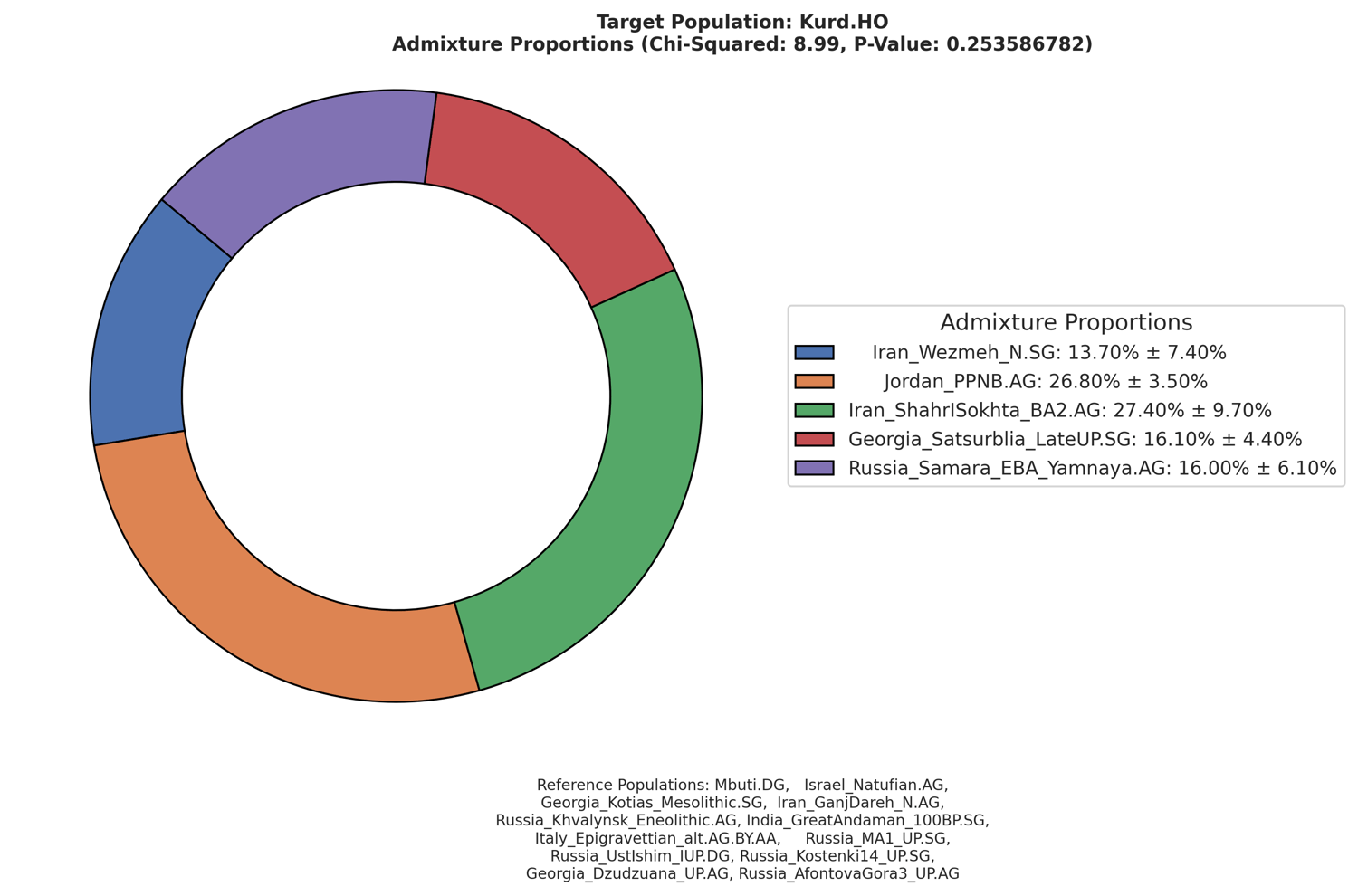
Kurd.HO 8 samples 23andme format
The Kurds are an indigenous ethnic group native to the rugged, mountainous regions of the Middle East. They are primarily found across eastern Turkey, northern Syria, northern Iraq, and western Iran, with smaller communities in Armenia and the Caucasus. With an estimated population of 30–40 million, the Kurds are among the largest stateless ethnic groups in the world.
The Kurdish language belongs to the Iranian branch of the Indo-Iranian family, itself a subgroup of the Indo-European languages. The main Kurdish dialects are:
Kurmanji, spoken in Turkey, Syria, and northern Iraq, Sorani, spoken in Iraq and Iran,Pehlewani ,spoken in parts of Iran and Iraq, Zazaki and Gorani.
Kurdish is closely related to Balochi, the language of the Baloch people in Iran and Pakistan. Both languages evolved from northwestern Middle Iranian dialects and share similarities in grammar, vocabulary, and phonetic structure, reflecting a common ancient heritage.
Historically, the Kurds have deep roots in the region and may descend from the ancient Medes, an Iranian people who established a powerful empire in the 7th century BCE. Although direct descent is debated, many Kurdish cultural traditions and linguistic features clearly reflect Iranian influence. Under the Islamic Caliphates, Kurdish tribes often preserved a degree of autonomy, frequently offering military service in return. During the medieval period, they established their own dynasties and principalities, such as the Shaddadids, Hasanwayhids, and the Ayyubid Dynasty.
One of the most renowned Kurdish figures is Saladin, the founder of the Ayyubid Dynasty, who achieved fame for recapturing Jerusalem from the Crusaders in 1187 and unifying much of the Levant under Muslim rule.
In more recent history, the Kurdish struggle for self-determination has continued. A prominent figure in the early 20th century was Mahmud Barzanji, a Kurdish leader who led multiple uprisings and at one point declared an independent Kurdistan. Another key leader, Jalal Talabani, later became the first Kurdish president of Iraq, symbolizing a significant political milestone for the Kurdish people.
For this video, I gathered the raw DNA of 8 ethnic kurds from the Reichlab aadr dataset. I ran them through qpAdm to determine their ethnic breakdown. I ran them through my Trait Predictor tool to assess their phenotypes and disease predisposition.
